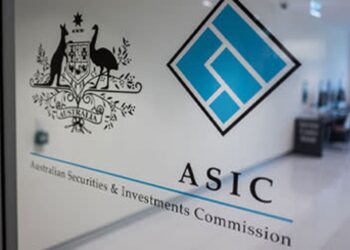Following a rocky relationship with the Liberals and the previous Coalition government, it’s no doubt a shock to many within financial advice that they are the only party showing green across the board on the Financial Advice Association Australia’s (FAAA) election hub policy tracker.
Covering commitments surrounding the association’s key asks – fixing the Compensation Scheme of Last Resort (CSLR), ATO portal access, finalising the Delivering Better Financial Outcomes reforms, cutting red tape, and supporting new entrants – the Coalition and prospective minister Luke Howarth have touted their support all the way through.
Whether advisers are willing to go back to the well and buy into the promises is for each to decide individually – the profession certainly has cause for scepticism.
However, their stance may not end up being material at all, with polls moving further in favour of returning the current government for a second term the closer to Saturday we get.
While Labor has solidified a lead over its primary competition, support for the Greens, teal independents and One Nation have kept a minority government well within the realm of possibilities.
Should this eventuate, their differing positions on financial advice matters could cause complications.
Labor is positioned in orange on all of the major advice issues, which means the FAAA deems their views as “It’s complicated”.
It’s essentially a middle ground where the government hasn’t completely agreed, but it hasn’t necessarily disagreed either.
On the CSLR, for example, Labor has failed to clearly outline steps it would take to fix the scheme, but it has launched the Treasury review and voiced concerns around the “but for” methodology.
Despite protestations from Prime Minister Anthony Albanese that he would prefer to negotiate on a legislation-by-legislation basis with crossbenchers rather than formalise a power-sharing deal, it can’t be ruled out.
One seat short and Albanese can likely go ahead with his preferred model. Two? Maybe the same. But there will be a point at which a desire for stability will overrule election campaign posturing.
How much influence could they have?
The teal option might be the most preferable for advisers, with this particular ilk of independent supporting all of the FAAA’s policy asks.
While no formal agreement between the MPs or candidates exists, and they don’t always vote the same way, they do broadly align on most policies.
That’s good news for advisers if this scenario eventuates, but how hard they push in one area will necessitate concessions in others. Where advice sits in the hierarchy will be clear once the horse-trading begins.
If the Greens get the tick, things could be tougher.
The FAAA marked the party in the red of “Doesn’t support” on every position.
Much of this is based on educated assumptions, with George John, FAAA senior manager, government relations and policy, telling ifa the party has “not engaged with us and we have responded to this on the basis of previous public statements”.
Given it is a formal political party rather than a loosely aligned independent movement, along with its significant power in the Senate, swaying the Greens to vote in its favour would be a tougher ask for Labor.
The stalled Division 296 $3 million super tax is an interesting case study for how the government might operate.
Labor managed to get the Greens onboard in the Senate by agreeing to legislate superannuation on parental leave pay.
The teals, meanwhile, vocally opposed the taxation of unrealised gains in lower house and helped sway non-Greens crossbenchers to block the measure in the Senate – but they couldn’t directly affect the bill at all when Labor held a majority in the lower house.
Now the Greens are pushing for a $2 million threshold for the tax hike, which would expand the impact to a much larger cohort of Australians.
Getting support in both houses may look more attractive to Albanese.
“The Greens are an important factor in the Senate; however, reforms that have bipartisan support can be pushed through without the involvement of the crossbench,” John said.
“When issues are in front of the Senate, we will proactively engage with all key stakeholders to help ensure that measures succeed.”
Again, though, it all comes down to the numbers.
If advisers thought progress on legislation was slow with a majority government, the prospect of barriers in both houses could grind reforms to a halt.




When any government tastes the sweetness of tax on unrealised gains, they start searching for more, digging more and taking more, this is where gradually we turn into a true socialist country
It has been opposition policy to implement the Quality of Advie Review (QAR)”in full”. This wholly contradicts their stated election position by making promises of reform which they cannot implement. The messaging has been mixed, implausible, deceptive and seeks self-interested political gain.
They have even promised to repeal the “Accountants Exemption” removed in 2016 by a Coalition government. This will require substantial repeal of the Corporations Act. Again, this was rejected in the QAR, and in contradiction of stated opposition policy.
There is little chance that Angus Taylor or Luke Howarth will be returned to a government that had so disrespected a profession. The damage inflicted on the professional financial adviser over the past decade by Coalition “reforms” is virtually immeasurable.
It appears that the next three years may see individual advisers and industry associations again making representations to our legislators arguing to make quality financial advice more affordable and accessible for all Australians.
The crossbench may have influence post election, however the Minister is still responsible.
It is entirely possible the said Minister will be a Red one.
Rest easy chaps, Mr Dutton and Guilefull Gus won’t be in charge of the government benches after Saturday.
And the chances of there being minority labor government are as good as mine winning the next Melbourne cup. And I don’t even own a horse.
Which means we are back talking to labor and their predilection to support anything that comes out of, or favours, the industry superfunds, particularly if one of the left wing backbenchers gets the nod as Minister.
The FAAA can have all the grading systems it likes, but it won’t mean diddly squat to labor unless we engage some serious professional labor-connected lobbyists.
I’m getting a bit tired of saying it, but it’s the truth.
Why the need for lobbyists? That’s easy because our opponents, represented by the FSC, would have contributed to both sides of politics for electoral funding and that gets them access.
A minority Labor leans into the Greens, drops the cap to $2 million, but introduces indexation on the cap and removes the tax on unrealised gains which always a stupid idea and impossible to administer!
Time will tell.